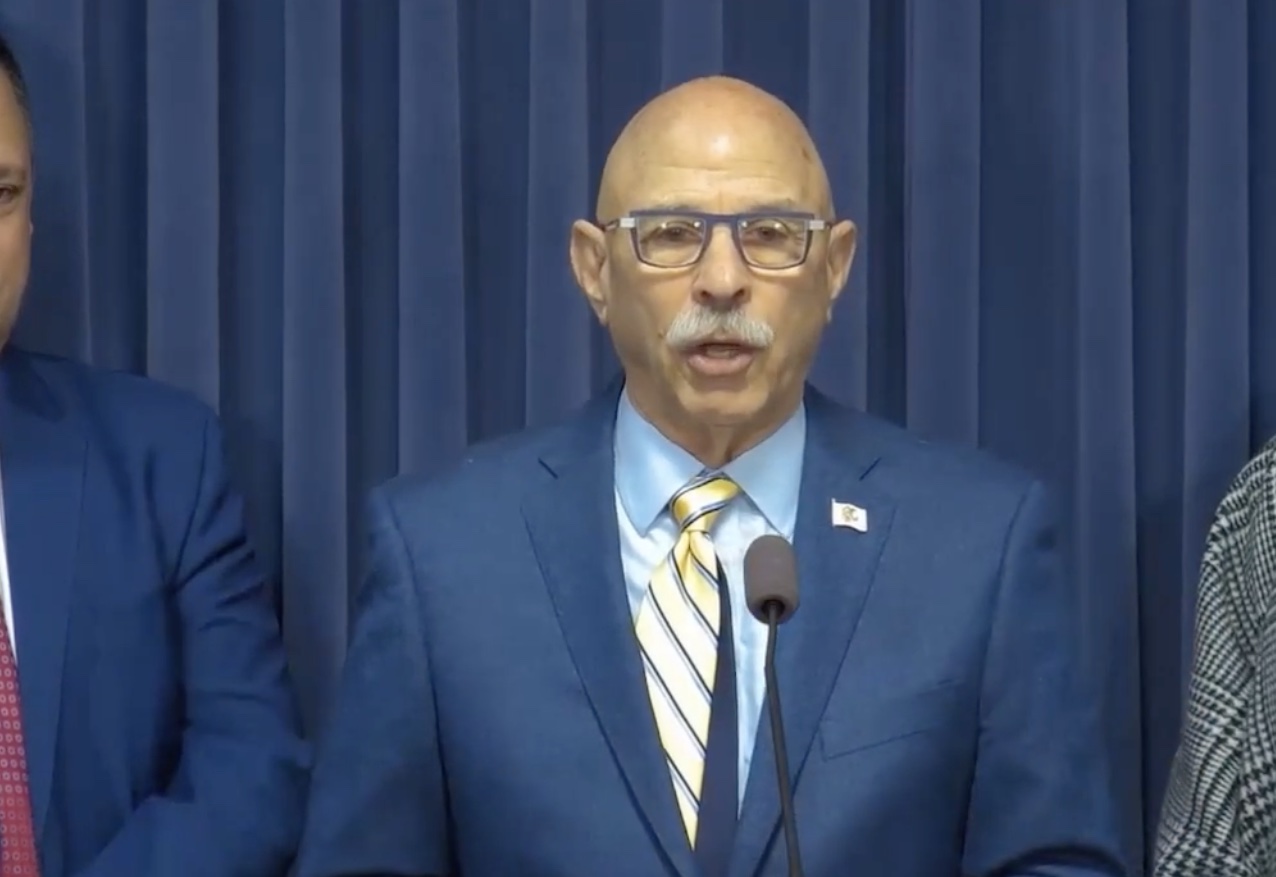By John F. Di Leo, Opinion Contributor
Inflation is down, they tell us. But that doesn’t mean prices have returned to normal. In fact, while inflation – the rate of increase in pricing – has slowed from its high point a year ago, prices are continuing to climb.
What’s the difference between a ten to sixteen percent inflation rate and a five to ten percent inflation rate? Either way, unless you’re earning raises of double digit percentage points more each year, your income is falling behind, and your savings are diminishing by the minute in purchasing power.
For the past two and a half years, we’ve been living in a period of severely retreating standards of living. Energy, food, transportation, mortgages and rents, and other such necessities all skyrocket, leaving little left for anything else. Americans are dipping into savings – and pausing their ongoing savings plans – at an alarming rate.
They tell us we’re not in a recession. They tell us – having changed the way that they cook these books – that we haven’t yet had two successive quarters of negative growth, so you can’t call it a recession.
Okay then, what should we call it?
Malls are emptying at a rapid clip. Retail chains are closing stores by the hundreds. Strip malls are mass producing their vacancy signs. Sure, retail has always been difficult, but this isn’t normal.
This year alone, Bed Bath and Beyond went bankrupt, closing 896 stores.
Foot Locker and Champs are closing down 545 locations.
Tuesday Morning’s bankruptcy shuttered 487.
Numerous other retail chains are reporting smaller numbers of closures too – Walgreens 150, Bath and Body Works 50, the Gap and Banana Republic family, 46.
We may not be able to call it a recession, but if it’s not, it sure feels like one.
What’s the result of all these closures?
First the obvious. The mall owners, often real estate investment trusts in which your and my 401Ks are invested, suffer from the loss of rents. This hurts everybody, whether they shop at brick and mortar stores or not.
And the stores themselves shed employees, of course – as they close, their employees, both full time and part time, lose those jobs, from sales clerk to general manager, from security guard to receiving supervisor.
Since retail success builds upon the success of neighbors, every store’s closure brings down its neighbors as well. If a mall has ten storefronts and only five are occupied, the odds that potential shoppers will stop to give the remaining five a chance at their business dwindle almost geometrically.
People don’t flock to “ghost towns in the making;” they avoid them like the plague.
The restaurants nearby, and all the other service industries that normally surround a mall too, will suffer the loss of business. They are all interconnected; you don’t meet up with your friends at the pizzeria or burger joint or sushi café after a few hours of shopping, if those few hours of shopping together don’t happen in the first place.
The local city, county and state that depended on both the property tax revenue of these locations and their sales tax collections will suffer a loss in revenue, which government always makes up the same way: by raising other taxes on everyone else.
Okay, I hear you saying. It happens. It’s lousy. But what can we do about it? Isn’t this cyclical? There’s nothing we can do about it, after all.
Well, that’s the thing. Maybe there is. People don’t shop so much at brick and mortar stores for a number of reasons. We can look at a few of them.
Inventory
Online stores are more likely to have what you want in stock than your local brick and mortar store. Why is that?
Perhaps at least in part because it’s so hard for a brick and mortar store to afford the carrying costs of a larger inventory footprint – every product in every size. This quickly becomes a self-fulfilling prophecy; low sales don’t bring in enough revenue to afford to keep everything in stock, so low stock causes ever lower sales. Why are carrying costs so high? Well, high taxes, and especially Federal Reserve interest rate maneuvers over the past couple of years, are a couple of the big reasons.
Where’s the local content?
People don’t like to shop at expensive stores with shelves full of foreign-made merchandise. If they want us to do our patriotic duty and show up at our neighborhood stores, shouldn’t those neighborhood stores be selling at least some respectable percentage of US-made merchandise? Well, there’s a reason why there’s less US-made merchandise on the shelves every year: high taxes, high regulations, often hostile unions and even hostile NIMBY neighborhoods have made manufacturing in the USA more and more expensive over the decades. It isn’t always that stores don’t want to stock US-made goods; too often, they don’t stock US-made goods because there simply aren’t many to stock. Most consumer goods, from clothing to appliances, are made abroad now; our tax and regulatory climate at home is too hostile.
The empty pocketbook
As mentioned, the American consumer has less spending money today than four years ago, certainly far less than in the heyday of the American mall culture, in the 1980s. Why? What’s the cause of the American consumer being so broke today that wandering through a mall, even just to browse, has become more a cause of depression than a pleasant way to spend an evening?
Perhaps because our own personal tax rates have climbed. Our state and federal income tax, the property tax on our homes, the sales tax on everything we buy – it all adds up. When the shopper is broke, he ceases to shop; not because he doesn’t want to, but because he simply can’t.
Growing urban crime waves
But even if you couldn’t buy everything in sight, even if you could only window-shop, wandering the malls used to be a true joy, remember? Fun, interesting, exciting, from browsing the bustling aisles to a weekend of people-watching.
Not anymore.
The old crime risk was limited to the occasional pickpocket. The new risk is near-daily gang activity in the parking lots and often even in the busy heart of a lot of America’s business districts and malls. Now whole mall or street takeovers are becoming de rigueur.
If the risk of shopping has grown beyond maybe buying something you didn’t really need, and become a very real possibility of muggings, rapes, beatings, carjackings, or even shootings or stabbings, it no longer makes sense to visit a mall for fun. And why has crime skyrocketed so? Why? Oh, you know. Everyone knows.
A combination of “open borders” inviting in foreign drug gangs, soft judges giving guilty criminals lenient sentences so they’re back on the streets in no time, and worst of all, corrupt county prosecutors who refuse to enforce the law, and who ban their staffs from even charging the criminals who are caught for most crimes.
The cost of energy
Prices have gone up so much, so fast, over the past 2.5 years, that even if window-shopping was an option before, it is such no longer. With energy costs where they are today – the power supplying the factory and the store, the diesel fuel powering the trucks delivering the goods themselves – the vast majority of the sting of this inflation explosion is laid directly at the feet of these skyrocketing energy prices. And why did energy prices explode in the first place? The Executive Orders issued on Quid Pro Joe Biden’s first day of office set it all in motion.
Biden campaigned to attack the oil, natural gas, and coal industries, and he has done so.
Biden campaigned on making energy infinitely scarcer and less affordable, and he has done so. The conditions that make everything unaffordable aren’t accidental; they’re purposeful.
What do these issues all have in common?
They aren’t cyclical after all, are they? Our problems aren’t just the fated passage of time, as the pundits of the Left would have you believe. It’s not the unavoidable drift of history, as the marxist dialectic would imply. Our problems are of our own making, or perhaps it would be closer to say, our problems are of our own electing.
Government has set tax rates so high that our consumers can’t afford to consume the goods our stores offer for sale.
Government has implemented regulations so onerous that manufacturers can’t produce affordable products for those stores to offer.
Government has set interest rates – in a futile attempt to artificially curb inflation – at levels that quickly weaken American businesses, the very entities that we need to be strong in order to take the country out of such economic challenges.
And government has filled our shopping districts with criminals who endanger the community far beyond the ability of local police to control the risk.
It’s all government.
Everything that happens provides a lesson, if only we onlookers pay attention, face the hard truths, and admit it to ourselves. Everything has a reason, and everything has a cure.
It may seem simplistic to simply say “if everything suddenly got worse 2.5 years ago, then maybe we should trying going back to the policies we had before that.” But just because it sounds simplistic doesn’t mean it isn’t true.
We had a better economy from 2017 through 2019 for a reason: the tax reducing, regulation cutting environment of the Trump years worked, as every conservative knew they would. You don’t have to be a Trump acolyte to acknowledge the simple truth that conservative, constitutional policies work better than leftist unconstitutional policies. You don’t have to support President Trump for a return in 2024 to acknowledge that what America needs most is the removal of the Biden-Harris crowd from the levers of power.
All around us, we watch American businesses diminish and American citizens’ lives suffer a reduced standard of living. The recovery only requires that America acknowledge the reason, and implement a course correction, as soon as possible.
Copyright 2023 John F. Di Leo
John F. Di Leo is a Chicagoland-based trade compliance trainer and transportation manager, writer, and actor. A one-time county chairman of the Milwaukee County Republican Party, he has been writing regularly for Illinois Review since 2009. Follow John F. Di Leo on Facebook, Twitter, Gettr or TruthSocial.
A collection of John’s Illinois Review articles about vote fraud, The Tales of Little Pavel, and his 2021 political satires about current events, Evening Soup with Basement Joe, Volumes One and Two, are available, in either paperback or eBook, only on Amazon.
Don’t miss an article! Use the free tool on this page to sign up for notifications whenever Illinois Review publishes new content!









